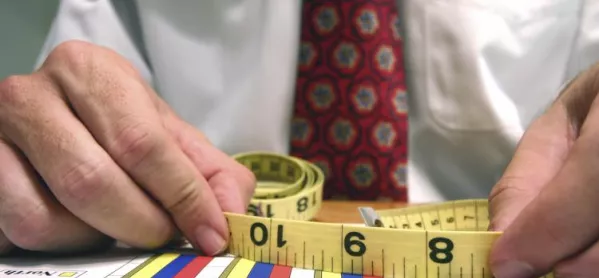- Home
- Andreas Schleicher: ‘In the era of post-truth politics, Pisa tells you straight about what works in education’
Andreas Schleicher: ‘In the era of post-truth politics, Pisa tells you straight about what works in education’

Tomorrow, the Organization for Economic Co-operation and Development (OECD) will publish the 2015 Pisa results. The world’s premier global metric for education will tell us which countries have the best school systems, based on the performance of 15-year-olds in science, mathematics and reading over a two-hour test.
Pisa (the Program for International Student Assessment) was introduced in 2000 and has been held every three years since. The test is of skills, not knowledge: what you can do with what you know is what counts. But over time the emphasis has shifted. The focus today is whether students can think like a scientist, reason like a mathematician and distinguish between good and bad arguments in a written text. We live in an era of unimaginable technology breakthroughs, conflicting values and threatened political norms. Literacy, in all three of the foundational domains, is the key to making sense of the world and shaping it for the better - for everyone, not just elites.
The value of Pisa lies in comparison. Countries look beyond their borders for evidence of effective policy and Pisa provides a yardstick for evaluating success. It ranks the performance of countries on quality, equity and efficiency. And by picking out the characteristics of high-performing systems, it allows educators to identify successful policies and adapt them to local contexts.
In the last Pisa round, in 2012, the best performing countries were in Asia. Asian countries took the top five spots in both mathematics and reading and the top four in science (with Finland in fifth place). But behind the headlines lie important insights. In Estonia and Finland there were only small variations in student scores, showing that quality can go hand-in-hand with inclusion. In Canada, Macao and Hong Kong, socio-economic disadvantage among students had relatively less impact on individual performance: poverty is one thing, destiny quite another.
So what will we learn from Pisa 2015? For the first time in a decade, the report concentrates on science. Has science education improved? Around the world, have 15-year-olds got better at explaining phenomena scientifically, designing scientific enquiry and interpreting data scientifically? Is the gender gap in science education closing? Have poorer students caught up? And where countries have maintained high performance or improved from where they were, what were the factors? Where should the balance lie between additional investment, great teaching and coherent long-term leadership?
The global stakes are high: first because of growing demand for scientists in the workplace, second because every one of us needs a scientific perspective. The demand for scientists comes from the transformational impact of science and technology. Given the accelerating pace of invention and innovation, it’s vital that countries prepare more young talent for more jobs in hard science - and for many other jobs with a science dimension.
The broader need for scientific literacy stems from the centrality of science to everyday decisions. Whether buying toothpaste, recycling household waste or attending a meeting on the local effects of global warming, we are all subject to science-based claims and counter-claims. Can we separate substance from spin, identify misrepresentations and assess levels of uncertainty and trustworthiness? Post-truth politics is the neologism of the year and in some quarters expertise itself has become a dirty word. It is time to stand our ground - to insist on education as the key to civilized societies.
In many countries, educators are talking not only about skills but also values and attitudes. Singapore, Australia, Canada, Estonia and Finland - all of them among the top performing countries in previous Pisa cycles - are rebuilding curricula around new forms of competence, such as critical and inventive thinking, global awareness and collaboration. They see values such as tolerance and respect as foundational. Pisa too is developing rapidly. Next year we will publish the results of an additional 2015 assessment of collaborative problem solving, and we have advanced plans for assessing inter-cultural sensitivity in 2018. Creativity, entrepreneurship and ethical thinking are all under consideration for future cycles.
But with the seventy Pisa countries and economies, the OECD believes that the bedrock of a good education should continue to lie in science, mathematics and reading. Literacy in all three offers prosperity, fulfilment and a chance to contribute to the well-being of others. Tomorrow, Pisa 2015 will tell the world about its progress.
Andreas Schleicher is the OECD’s director for education and skills
Want to keep up with the latest education news and opinion? Follow TES USA on Twitter and like TES USA on Facebook.
Register with Tes and you can read two free articles every month plus you'll have access to our range of award-winning newsletters.
Keep reading with our special offer!
You’ve reached your limit of free articles this month.
- Unlimited access to all Tes magazine content
- Save your favourite articles and gift them to your colleagues
- Exclusive subscriber-only stories
- Over 200,000 archived articles
- Unlimited access to all Tes magazine content
- Save your favourite articles and gift them to your colleagues
- Exclusive subscriber-only stories
- Over 200,000 archived articles



